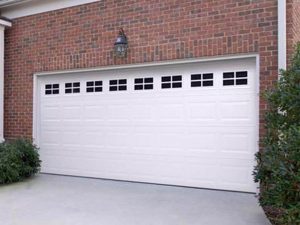Those who live in hurricane-prone regions must buy wind load garage doors. That’s a fact. Whether you get a single or a double garage door, it’s important but not the main consideration. The vital thing is that the hurricane-proof garage door meets the local building codes. And the way it is structured depends on several factors, which we are about to explore. So, sit tight!
Double or single wind load garage doors?
 hen it comes to withstanding hurricanes and storms, the garage door size matters. There’s no doubt about that. As you most likely suspect, single garage doors are considered better than their double counterparts due to their smaller size. The fear during storms and hurricanes is whether or not the garage door will withstand the wind pressure. In other words, the question is whether or not the garage door will still stand after the storm goes away.
hen it comes to withstanding hurricanes and storms, the garage door size matters. There’s no doubt about that. As you most likely suspect, single garage doors are considered better than their double counterparts due to their smaller size. The fear during storms and hurricanes is whether or not the garage door will withstand the wind pressure. In other words, the question is whether or not the garage door will still stand after the storm goes away.
People who live in such areas can settle for some garage door repairs due to some damage. But everyone’s fear is that if the garage door won’t stand the pressure and becomes severely damaged, the force of the wind will enter the home, the pressure will buildup, and the roof might blow off. To avoid tragedy, it’s best to focus on more things other than just the door size, although that matters too.
Hurricane garage doors & wind pressure
 Not all hurricane garage doors are the same. They are each structured to withstand winds that run with a certain number of miles per hour – usually, up to 200 mph and in this case, withstand category 5 hurricanes. So, when you intend to buy a hurricane-rated garage door, it’s important to consider some facts related to your home. Anything from the height of the building to its orientation, exposure and structure is relevant. Such facts about your home and also the direction of the wind determine the garage door resistance. The intention is to get a wind load garage door that can withstand both the positive and negative wind pressure.
Not all hurricane garage doors are the same. They are each structured to withstand winds that run with a certain number of miles per hour – usually, up to 200 mph and in this case, withstand category 5 hurricanes. So, when you intend to buy a hurricane-rated garage door, it’s important to consider some facts related to your home. Anything from the height of the building to its orientation, exposure and structure is relevant. Such facts about your home and also the direction of the wind determine the garage door resistance. The intention is to get a wind load garage door that can withstand both the positive and negative wind pressure.
- Negative wind pressure is when the wind pushes the garage door inwards.
- Positive wind pressure is when the wind pulls the garage door off the house.
That’s where the matter of choosing single or double garage doors is once more on the table. DASMA has issued a guide about the miles per hour single and double garage doors must withstand taking into account the negative and positive wind pressures and depending on the building’s structure.
Many things affect your decision about impact-rated garage doors
There’s more to impact-rated garage doors than meets the eye. Their resistant construction is also subject to the parts. For example, the garage door tracks and the brackets must be thick and made of low-gauge steel to provide greater resistance. Not only must the garage door parts be strong, but also in good condition. And that’s where the value of regular garage door maintenance is apparent. It’s not enough to get a wind load garage door but also to keep it in excellent shape too.
And there’s more. There are storm-ready and add-on wind load garage doors. The former is ready to withstand winds, the latter must be equipped with the necessary braces before the hurricane strikes. You must also remember that wind load garage doors are often called impact-rated due to the debris created during storms. The garage doors are tested that they withstand impact with wind-borne debris and so there’s limited or no damage and greater resistance to the storms.
To get the best hurricane garage door for you, it’s best to check the building codes in your location. Simply put, this is more than just a simple decision on whether to get a single or double wind load garage door. But once again, the garage door size matters too.






